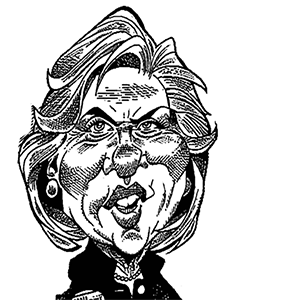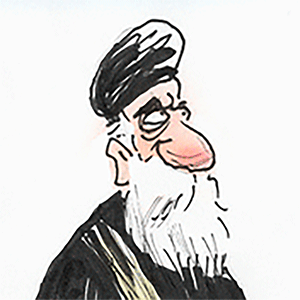Can California Gov. Gavin Newsom regain control of Guard? Appeals court hears arguments
Published in News & Features
SACRAMENTO, Calif. — Lawyers for California Gov. Gavin Newsom on Tuesday attempted to regain the upper hand in their legal fight with the Trump administration over the president’s decision to deploy the state’s National Guard in response to protests in Los Angeles over the objections of the governor.
The two sides faced off before a three-judge federal appeals panel in San Francisco, Newsom arguing that Trump’s move amounted to a “terrifying” assault on democracy, while the president’s lawyers said Trump had the authority to take control of the guard under federal law.
But if the judges — two appointed by Trump and one by former President Joe Biden — had sympathy for the state’s argument, they did not show it during oral arguments on Tuesday.
U.S. Circuit Judges Eric Miller and Mark Bennett, appointees from Trump’s first term in office, along with Jennifer Sung, asked both sides pointed questions about the president’s power and the language in the law that allows him to mobilize the National Guard if “the president is unable with the regular forces to execute the laws of the United States.”
Protests broke out in the nation’s second-largest city on June 6, after federal agents conducted unannounced immigration sweeps in the downtown garment district and at a Home Depot store where day laborers were looking for jobs.
On June 8, the military’s U.S. Northern Command said it had deployed the National Guard, a move that ultimately led to the deployment of 4,000 guard troops and 700 U.S. Marines. On Sunday, Trump said on his social media platform that he had ordered similar mass raids in other large cities controlled by Democrats.
After the California Guard was activated over Newsom’s objections, he sued, saying that the law Trump had used to take control Guard specified that the governor had to issue the order to do so. He won a temporary restraining order against the administration last week, but the appeals court almost immediately struck it down, saying it would hear arguments on the matter today.
The three-judge panel will likely rule on the matter this week. A hearing on the case in federal court is scheduled for Friday before U.S. District Judge Charles Breyer, whose earlier temporary restraining order was paused by the appellate court.
Much of the discussion on Tuesday centered on an 1827 decision by the U.S. Supreme Court known as Martin v. Mott, in which the court flatly stated that the president is the one with the authority to decide whether conditions exist under which he or she can call up the militia.
Such power to “call forth the militia ‘to execute the laws of the union, suppress insurrections, and repel invasions’ have arisen is exclusively vested in the President, and his decision is conclusive upon all other persons,” that decision read.
“The problem that I see for you is that Mott seemed to be dealing with very similar phrasing ... and it seemingly rejected the exact argument that you’re making,” Sung told Newsom’s lawyer, Supervising Deputy Solicitor General Samuel Harbourt.
Even a friend of the court brief filed by members of the military “stops short of saying the president couldn’t make that decision,” Sung said.
Bennett questioned Harbourt’s argument that Trump should consider less drastic measures than sending in a military presence, asking where in the law it said that was required. He also pressed Harbourt on his argument that the White House should have gone through Newsom personally to mobilize the Guard, considering that the official whom the administration did contact — Maj. Gen. Matthew Beevers, the state’s adjutant general — is authorized to act in the governor’s name.
Legal experts said Trump’s mobilization of the National Guard over the objections of a state’s governor was highly unusual, and based on laws whose language could be interpreted in different ways.
In their argument filed with the court over the weekend, Newsom argued that federal law limits the president’s takeover of the guard to conditions far more extreme than street protests, even if some protesters become violent. The law restricts such actions to times when the United States is invaded, there is a rebellion, or “the President is unable with the regular forces to execute the laws of the United States.”
State and local police were well able to handle the level of violence in the L.A. protests, and the presence of military troops raised tensions rather than easing them, Newsom argued. Moreover, Trump’s takeover of the guard affected Newsom’s ability to use the personnel in important ways, including as part of a key team fighting wildfires as the summer dry season began.
But Trump’s lawyers argued that Congress did not intend for the president to only deploy the guard in the face of full-scale revolutions, the administrations argument, filed in court Monday, shows.
They point to actions as early as the Whiskey Rebellion of 1794, when President George Washington activated a militia amid protests in Pennsylvania over a tax on whiskey and other distilled products. More recently, the administration said, the National Guard was called up to enforce the Civil Rights Act of the 1960s over the objections of governors in Alabama and Mississippi.
“The situation in Los Angeles is far from ordinary civil unrest being adequately addressed by local law enforcement,” the president’s lawyers wrote in their argument. “Federal officials have been specifically targeted and subjected to periods of sustained violence aimed at preventing them from executing federal immigration laws.”
But Newsom’s lawyers said that the administration’s definition of a rebellion was far too broad and would allow the federal government to step in any time someone refused an order or disagreed with a policy supported by the president.
“Considered individually, defendants’ legal arguments are meritless,” Newsom’s brief says. “Considered in the aggregate, they are terrifying.”
____
©2025 The Sacramento Bee. Visit at sacbee.com. Distributed by Tribune Content Agency, LLC.







Comments